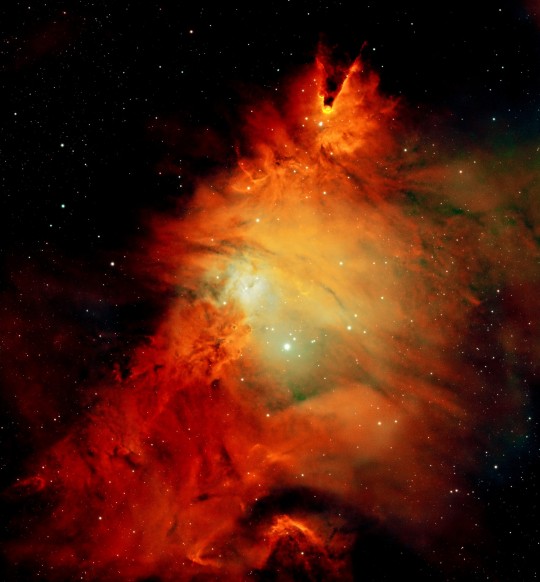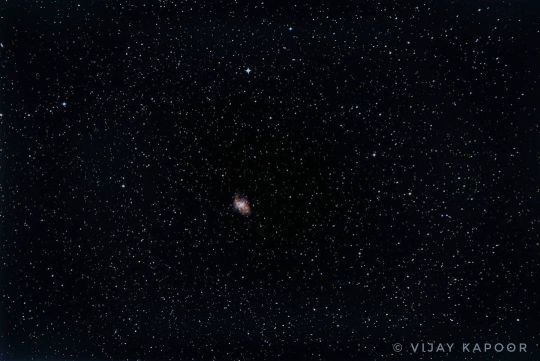#CrabNebula
Explore tagged Tumblr posts
Text

The Crab Nebula from Visible to X-Ray Image Credit: NASA
862 notes
·
View notes
Text

#IFTTT#Flickr#nasa#nasasmarshallspaceflightcenter#nasamarshall#marshall#msfc#solarsystembeyond#astronomy#astrophysics#chandraxrayobservatory#nebula#crabnebula
56 notes
·
View notes
Text
James Webb Space Telescope Uncovers New Mysteries of the Crab Nebula

NASA’s James Webb Space Telescope has unveiled groundbreaking details about the Crab Nebula! This iconic supernova remnant, observed in unprecedented detail, challenges previous theories about its origins. JWST’s advanced instruments revealed intricate structures and compositions, offering fresh insights into the enigmatic nebula. Dive into the mysteries of space with this latest discovery!
🔭🚀 Read more: https://www.jameswebbdiscovery.com/discoveries/james-webb-space-telescope-uncovers-new-mysteries-of-the-crab-nebula
#NASA #JamesWebb #CrabNebula #SpaceDiscovery #Astronomy #Supernova #SpaceExploration #Astrophysics #ScienceNews
#NASA#JamesWebb#CrabNebula#SpaceDiscovery#Astronomy#Supernova#SpaceExploration#Astrophysics#ScienceNews
49 notes
·
View notes
Text
A few 2024 astro photos






#astrophotography#zwo#skywatchertelescopes#soulnebula#crabnebula#helixnebula#christmastreenebula#thestellarspectrum
2 notes
·
View notes
Photo

*Crab Nebula - M1* The Crab Nebula (catalogue designations M1, NGC 1952, Taurus A) is a supernova remnant and pulsar wind nebula in the constellation of Taurus. The common name comes from William Parsons, 3rd Earl of Rosse, who observed the object in 1840 using a 36-inch telescope and produced a drawing that looked somewhat like a crab. The nebula was discovered by English astronomer John Bevis in 1731, and it corresponds with a bright supernova recorded by Chinese astronomers in 1054. The nebula was the first astronomical object identified that corresponds with a historical supernova explosion. *Observation data* Distance to Earth: 6,523 light years Distance: 6500±1600 ly (2000±500 pc) Constellation: Taurus Absolute magnitude (V): −3.1±0.5 Apparent dimensions (V): 420″ × 290″ Coordinates: RA 5h 34m 32s | Dec +22° 0′ 52″ *Physical Characteristics* Radius: ~5.5 ly (~1.7 pc) Absolute magnitude (V): −3.1±0.5 Notable features: Optical pulsar Designations: Messier 1, NGC 1952, Taurus A, Sh2-244 *Captured on*: __Feb. 14, 2021... *Equipment*: __TSOptics Photon 12" F4 Advanced Newtonian... __TSOptics 0.95 reducer and coma corrector... __SoftwareBisque Paramount MX Mount... __Nikon D750 DSLR Camera .... *Processing Details*: __48 x 30 sec. each frame (24 min. data) __17 dark frames __ISO-1270 __Stacked in DSS __Processed in PixInsight __Enhanced in LightRoom & Snapseed *Location:* __Chiguru Farm, Bilikal Forest, Karnataka *Sky Conditions* __Bortle Scale 3.8 __Clear Sky __Few surrounding villages lights interference #CrabNebula #astrophysics #nightsky #astronomy #softwarebisque #astrophotography #starrynight #cosmos #AstroPhotographyIndia #nikon #Travel #karnataka #india © Vijay Kapoor Follow My Instagram for More pics: http://Instagram.com/lunar_mountains_climber https://www.instagram.com/p/CLqqYeNJVcZ/?igshid=qfm1kjml0apz
#crabnebula#astrophysics#nightsky#astronomy#softwarebisque#astrophotography#starrynight#cosmos#astrophotographyindia#nikon#travel#karnataka#india
3 notes
·
View notes
Video
instagram
Reposted from @universe_wheremagichappens (@get_regrann) - #Pulsars are cosmic lighthouses, dense stars that sweep beams of radiation across the #Universe as they spin! This little video, combining 9 months of #Hubble images, shows rings, wisps and #jets around the #CrabNebula pulsar! 🌀🔭 • Follow @universe_wheremagichappens for more! ————————————- #science #physics #astronomy #blackhole #blackholes #astrophysics #cosmology #stars #star #instagram #discovery #curiosity #wonderful #space #universe #cosmos #beauty #wheremagichappens #planets #astro #galaxy - #regrann (en Time Traveler Technologies Ltd.) https://www.instagram.com/p/B3a66n2By0q/?igshid=473cjkcgyux3
#pulsars#universe#hubble#jets#crabnebula#science#physics#astronomy#blackhole#blackholes#astrophysics#cosmology#stars#star#instagram#discovery#curiosity#wonderful#space#cosmos#beauty#wheremagichappens#planets#astro#galaxy#regrann
7 notes
·
View notes
Photo

The #SupernovaPictograph in #ChacoCanyon depicting what many experts believe was a #Supernova first observed on 4 July 1054 A.D. world wide by many cultures notably the Chinese. It was observed in broad daylight for almost a months and for longer than a year at night. The #CrabNebula is believed to be the remnants of this star. I hiked to this panel 48 hours ago on my journey to move from Cedar City, Utah to the Phoenix Valley in Arizona. This was my first journey to the site. (at Chaco Culture National Historical Park) https://www.instagram.com/p/Bz_pFdchE2Z/?igshid=gwyz7318k5mg
17 notes
·
View notes
Photo

Messier-1: The Crab Nebula. What a story: this is the remnants of a nearby star that exploded in 1054. We know the exact timing because ancient Chinese astronomers documented everything. So, what you see here is the explosion in progress, but almost a thousand years later. I photographed the Crab Nebula from my balcony in Strasbourg France in February 2022. #messier1 #crabnebula #nebula #supernova #messierobjects #astrophotography #astrophotographie #astronomy #astronomiefrance (at Strasbourg, France) https://www.instagram.com/p/CafAxYAscDM/?utm_medium=tumblr
#messier1#crabnebula#nebula#supernova#messierobjects#astrophotography#astrophotographie#astronomy#astronomiefrance
0 notes
Photo

One of the most famous and beautiful nebulae: the Crab Nebula.
2 notes
·
View notes
Photo

Crab Nebula Convolution Chromatic Studies 01 #hen500k #DigitalArtist #tezosart #nftart #tezos #crabnebula #astrophysics #generativeart #OBJKT #digitalart #hicetnunc2000 #NFTartists https://www.instagram.com/p/CV7XPxWI1-g/?utm_medium=tumblr
#hen500k#digitalartist#tezosart#nftart#tezos#crabnebula#astrophysics#generativeart#objkt#digitalart#hicetnunc2000#nftartists
0 notes
Photo

Crab Nebula detailed image #tamilastronomy #nebula #crabnebula #nebulafacts #astronomyfacts https://www.instagram.com/p/CRv5w1KgoXn/?utm_medium=tumblr
0 notes
Photo

OWL. At least it looked like an owl when I took the shot. Not so sure now. Maybe SUPERNOVA? #owl #supernova #stars #blackhole #space #spacetravel #nightsky #mystery #lifestyle #pop #popart #abstractart #rainstormpictures #crabnebula #dtla_everyday #dtla #photooftheday #photo #photogrid #bottlerock #photographylover #travel #dtlalife #afterlife #photoart (at PRANK)
#rainstormpictures#supernova#photoart#photogrid#blackhole#bottlerock#owl#abstractart#nightsky#dtlalife#crabnebula#lifestyle#mystery#photo#popart#travel#pop#stars#dtla#dtla_everyday#photooftheday#afterlife#space#spacetravel#photographylover
2 notes
·
View notes
Text
Discovery Alert! In a new image released on Oct 30, 2023, Crab Nebula's Hidden Wonders Exposed by James Webb's Infrared Gaze. Read the full article here
NASA's James Webb Space Telescope has taken us on an incredible journey to the Crab Nebula, a supernova remnant located 6,500 light-years away. 🌟
Unveiling never-before-seen details and revealing the secrets of this cosmic wonder, Webb's NIRCam and MIRI instruments have provided us with a new perspective in infrared light. The Crab Nebula's intricate structure, from gaseous filaments to dust particles and synchrotron radiation, is a sight to behold.
#SpaceExploration #JamesWebbTelescope #Astronomy #CosmicWonders #CrabNebula #InfraredVision

9 notes
·
View notes
Photo

En el año 1054 de nuestra era astrónomos chinos y árabes vieron aparecer en el cielo una nueva estrella tan brillante que incluso era visible de día, pero solo duró 22 meses. Ahora sabemos que se trató de una supernova, cuyo remanente formó la Nebulosa del Cangrejo M1. Fue una foto difícil porque se encuentra relativamente baja en el cielo santiaguino, pero se pueden ver los filamentos que alguna vez fueron parte de la estrella muerta. Como dato curioso, la supernova dejó en el centro de la nebulosa un púlsar. Celestron Nexstar 8SE en montura Ioptron GEM 45, reductor focal 6,3, Canon Eos Rebel T7, exposición 307x60s ISO 400, total 5hr 7min. Procesada en DSS y Pixinsight. #nebulae #crabnebula #astrophotography (en Maipú, Chile) https://www.instagram.com/p/CLStUp4r5rC/?igshid=xbzmub8jk0ia
0 notes
Photo

A stunning composite image of the Crab Nebula 😍 made with data from the @nasachandraxray (blue and white), @NASAHubble (purple), and @nasa_spitzer (pink). . Image Credit: X-ray: NASA/CXC/SAO; Optical: NASA/STScI; Infrared: NASA-JPL-Caltech . . Follow @atomstalk . . . . #spacephoto #spacepics #spacetelescope #spacephotography #spaceknowledge #spacephotos #astronomyphotography #astronomyphotos #astronomy #astronomylovers #astronomynerd #spacelover #spacelovers #crabnebula #nebula https://www.instagram.com/p/CC_Q5ixDKe3/?igshid=fp3yf568oaxp
#spacephoto#spacepics#spacetelescope#spacephotography#spaceknowledge#spacephotos#astronomyphotography#astronomyphotos#astronomy#astronomylovers#astronomynerd#spacelover#spacelovers#crabnebula#nebula
0 notes
Text
Jul04
Dark and shadowy poetry for July 4th. #CrabNebula #SN1054 #Slavery #Poetry #OnThisDay #Poetry365

The Crab Nebula
To Sleep in the Shadows Dense is the umbra: A crawling shadow, Sombre as dusk, Cascading tones of darkness Into a matt, flat pool. The sable hands of night Reach out with raven Strokes of unseen fingers To steal the colour and Snuff out the light. Sightless, underexposed eyes, With veiled, visionless irises, Dilate vainly, attempting To capture any light From thieving…
View On WordPress
0 notes